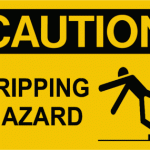“Teachers are working so hard teaching virtually, but the students’ test scores showed that they did not make the growth we were expecting,” my principal said. “Why do you think that might be?” She asked me.
At this point, I happened to be walking by and she asked me what my thoughts were about the lack of growth on the winter benchmarks. Was it due to inconsistency with expectations between home and school? Was it due to low student engagement? Was it due to the at-home learning environment? What could it possibly be?
My thoughts kept returning to a podcast I heard a few years ago about which is more important in the classroom – classroom management or student engagement? In the podcast, the teachers discussed the importance of both and that they believed while both are important, when students are engaged in their learning there are fewer management issues. (I am summarizing, so check out the podcast here.) I believe that classroom management and student engagement are two huge factors that resulted in the winter benchmark test scores (To see more about my thoughts on this, check out this post.). In a virtual setting, especially in primary grades, it is difficult to manage student behavior and engage students in their learning like a teacher would under normal circumstances.
In my classroom, if a student brings a toy to school, I confiscate it and the student can focus on learning; in my virtual classroom, if a student brings a toy to school, I tell them to put it away and play with it at lunch and the student moves the toy out of view of the camera and grabs two more to play with.
In my classroom, if a student is not looking at the speaker or the board, I can redirect them to look in the right place and use proximity to make sure they attend properly; in my virtual classroom, students are looking at the screen but at a different tab playing a game instead so I assume they are attending to the lesson. Sometimes I cannot tell where they are looking because their cameras are off due to shyness, slow WiFi, or because they have decided to go outside and jump on their trampoline because they do not want to read today. Correction: if they are jumping on the trampoline instead of reading they bring their Chromebook, make sure the camera is on, and refuse to listen to me when I try to bring them back to the reading lesson. Luckily, the last example only happened twice.
Teachers are trying to manage students to behavior the best they can on the other side of the monitor, but unless I can clone myself and send out 24 Mrs. Gawlowski’s to my students’ homes my management will not be the same. Perhaps if I can find a different or better way to engage my students, I can fix some of these management problems that I have experienced in my virtual classroom.
In my classroom, if students are not engaged in their learning I can try to change the pace of instruction, cold call on students or use choral response to bring students attention back; in my virtual classroom, students have to tune out excess noise like parents working from home, siblings also learning virtually at home, and really young siblings screaming and crying in the background.
In my classroom, if students are not engaged in their learning I can switch things up and play a learning game to remind my students that learning at school is exciting; in my virtual classroom, I can change my background to the beach or outer space, which catches their attention for a second before they disengage again.
While there are things teachers can do to manage the virtual learning environment, it is not the same as the learning environments we create in our classrooms. If the input is not the same, we cannot expect the same output from our students. There will be growth and progress, but until we can teach normally in our classrooms again the growth will not be what we have come to expect from our students.
Photo by Lukas from Pexels










Comments 1
Caitlin, you did a great job capturing the differences between our classrooms and our virtual classrooms. I think you are spot on when you connect our classroom and virtual learning enviroments with student engagement and academic growth!